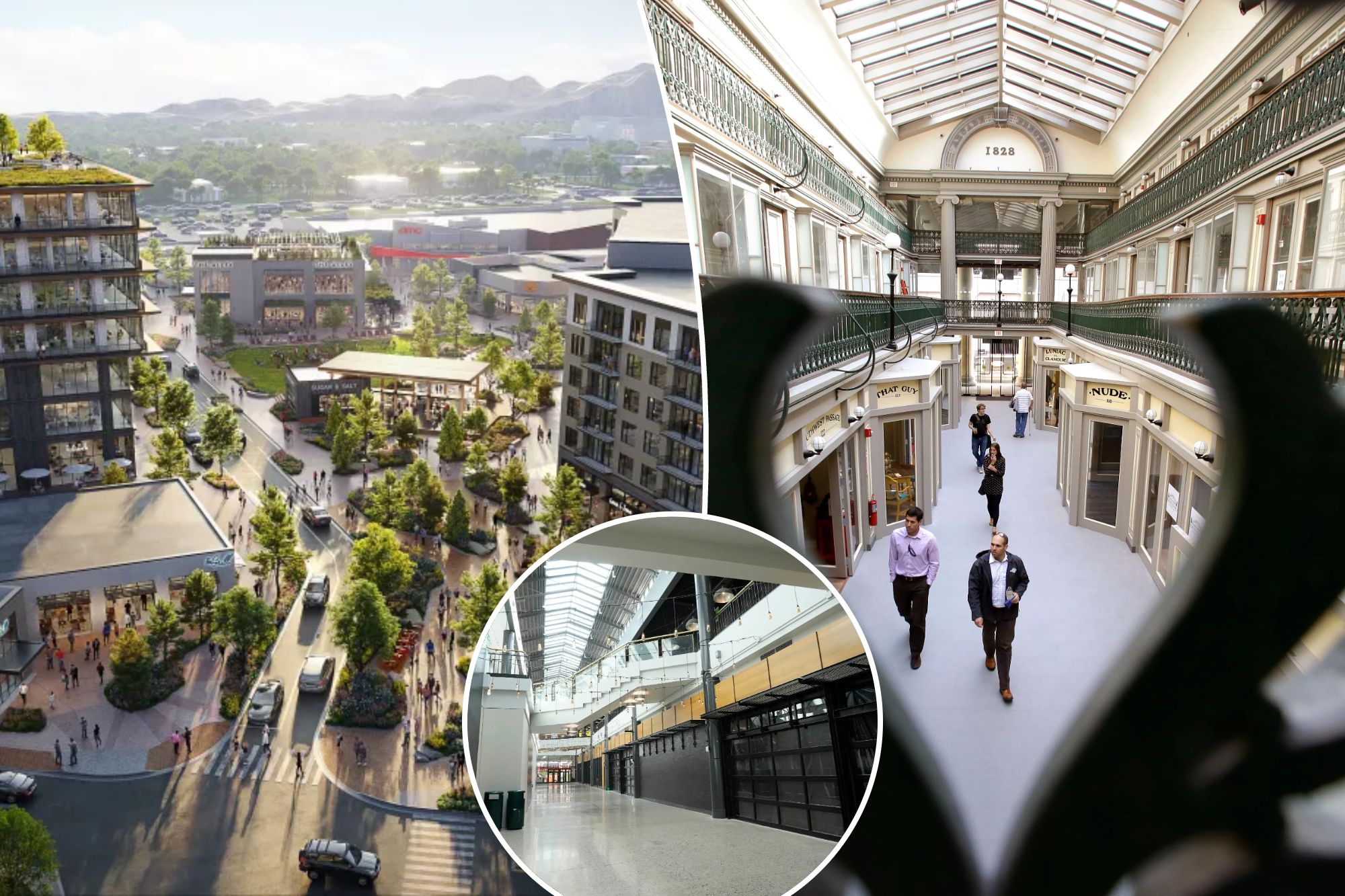T
he American mall is undergoing a transformation from a hub of suburban life to a mixed-use destination that combines housing, retail, and entertainment. Developers are repurposing empty department stores like Macy's and JCPenney by converting them into luxury apartments and affordable housing. This shift comes as malls struggle to stay relevant in a changing world.
In some cases, entire sections of malls are being reimagined with outdoor spaces, restaurants, and modern living quarters. "The mall is becoming cool again," says Jacob Knudsen, vice president of development for Macerich, which is adding housing to FlatIron Crossing Mall in Broomfield, Colorado.
Developers are addressing the US housing shortage by repurposing shuttered storefronts, parking lots, and underutilized mall areas into apartments. This trend is exemplified by projects like the Garden State Plaza in New Jersey, which offers convenient living with access to amenities like restaurants, stores, and recreational spaces.
As of January 2022, nearly 200 US malls had plans to add housing, with dozens already completed or under construction. In Phoenix, Arizona, the Paradise Valley Mall recently opened 400 luxury units, while Lafayette Square Mall in Indianapolis plans to debut 1,200 apartments by 2025.
For developers, the numbers make sense: top-tier malls still draw crowds, but more than 34 million square feet of US mall space sit vacant. While challenges include high construction costs and zoning issues, these developments attract residents and bring new life to struggling malls.
Experts see this shift as a sustainable way to reinvigorate malls and provide much-needed housing, creating vibrant communities integrated with retail and leisure. "There's just too much retail in the US," says Oscar Parra of Pacific Retail Capital Partners. "Instead of using it for retail, they're putting in apartments."
However, living at the mall comes with challenges, including high construction costs, outdated lease agreements, and zoning laws that can delay projects. But for residents like Amy Henion, a graphic designer who lives in The Arcade in Providence, Rhode Island, the perks are undeniable: "You have access to amenities that you don't get if you're just living in a home in a suburb."














